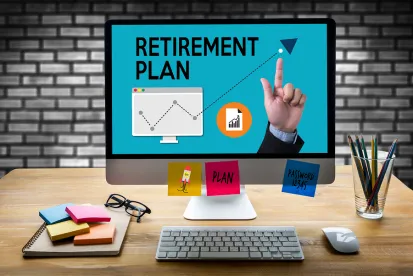On June 19, 2020, the IRS issued Notice 2020-50 (the “Notice”), which provides additional guidance regarding coronavirus distributions and loans from qualified retirement plans under the Coronavirus Aid, Relief, and Economic Security (CARES) Act. (Click here to read more about the new coronavirus distribution rights and loan rules under the CARES Act.) The Notice expands the group eligible for the new distribution and preferential loan provisions, clarifies the impact of the retroactive effective date for coronavirus distributions, discusses reporting of coronavirus distributions and the impact of such distributions on nonqualified deferred compensation plans, and provides a safe harbor for implementing loan repayment delays, each of which is discussed below.
Expansion of the Definition of Qualified Individuals
As a reminder, the new coronavirus distribution rights and preferential loan provisions in the CARES Act only apply to “Qualified Individuals.” As expanded under the Notice, “Qualified Individuals” now include an individual:
-
who is diagnosed with the coronavirus by a test approved by the CDC;
-
whose spouse or dependent (as defined in Code Section 152) is diagnosed with coronavirus by a CDC-approved test; or
-
who experiences adverse financial consequences as a result of the individual, the individual’s spouse or a member of the individual’s household:
-
being quarantined, furloughed or laid off, or having work hours reduced due to coronavirus
-
being unable to work due to lack of child care due to coronavirus,
-
having to close or reduce hours of a business they own or operate due to the coronavirus; or
-
having their pay reduced, job offer rescinded or start date delayed due to the coronavirus.
-
The plan administrator is entitled to rely on a participant’s certification that the participant is a Qualified Individual, and page nine of the Notice contains a sample certification that plans can use for that purpose.
Clarification Regarding Retroactive Effective Date for Coronavirus Distributions
The CARES Act provides that the special coronavirus distribution is available from January 1, 2020, through December 31, 2020. The Notice clarifies that the retroactive effective date is meant to allow Qualified Individuals to designate any distribution that they took during 2020 (such as a required minimum distribution or regularly scheduled periodic distribution) as a coronavirus distribution, which allows them to take advantage of the special income tax rules and repayment rules with respect to such distributions.
Employer Reporting of Coronavirus Distributions
Because coronavirus distributions can be repaid and/or can be reported as income for tax purposes over three years, it was unclear how qualified plans should report those distributions. The Notice provides that the plan must report the full amount of a coronavirus distribution made to a plan participant on a 1099-R for 2020, even if the participant repays the full amount of the distribution by the end of 2020 or is going to spread the income taxes related to the distribution over three years. The participant will deal with the taxable income allocation over the three-year period and the impact of any repayments via a Form 8915-E, which is a form that employees will be responsible for filing with their individual tax returns. In other words, employers and qualified plans will not be responsible for tracking the three-year tax allocation or repayments—that will be the participant’s responsibility. Note that the Notice also includes several pages describing the reporting obligations of Qualified Individuals under different scenarios, including how the reporting will be different if they opt out of the three-year income tax allocation or if they take advantage of the repayment option.
Cancellation of Nonqualified Deferred Compensation Deferrals
Under Section 409A of the Internal Revenue Code, an employer may cancel an employee’s deferral election under its nonqualified deferred compensation plan if the employee takes a hardship distribution from its qualified retirement plan. The Notice provides that the new coronavirus distribution is treated as a hardship withdrawal for purposes of this rule, such that the employer may cancel deferral elections under their nonqualified plans for employees that take a coronavirus distribution from their 401(k) plan account. Employers should check their nonqualified plan document to determine what it says about canceling deferral elections when an employee takes a hardship distribution from the qualified plan and then decide (and document) how coronavirus distributions will be treated for purposes of such nonqualified plan.
Safe Harbor for Application of Loan Payment Suspension
The CARES Act provides that a plan may permit a Qualified Individual who has an outstanding loan (whether a loan that was already in effect on the date of the enactment of the CARES Act or a new loan taken after the date of enactment) to delay payments due on such loan between the date of enactment and December 31, for one year. The Notice provides a safe harbor method of implementing the one-year delay for employers who want to offer this benefit to their employees. The method of implementing the one-year suspension meets the safe harbor if:
-
the payments that can be delayed are those that were due during any period selected by the employer that begins no earlier than March 27, 2020, and ends no later than December 31, 2020;
-
interest continues to accrue during the suspension period and is added to the loan principal;
-
the term of the loan is extended by one year from the date the loan was originally due to be repaid; and
-
loan repayments resume at the end of the suspension period, and the payment amount is recalculated so that the remaining loan amount is repaid in substantially equal installments over the remaining period of the loan.
The Notice includes a numerical example on page 18, which employers may want to review for additional clarity in how the safe harbor method works.





 />i
/>i
